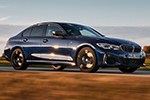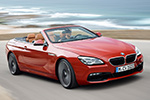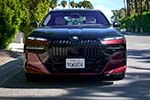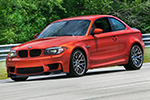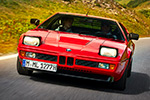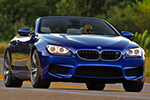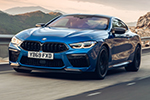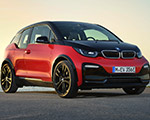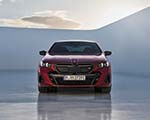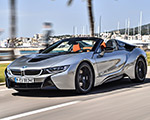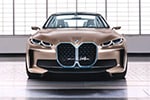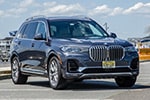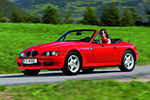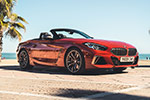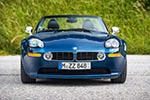If you’re going to launch a new chapter for MINI, you do it near the brand’s birthplace. And that’s exactly where we found ourselves: in the heart of Oxfordshire, throwing the first-ever electric John Cooper Works model down the kind of twisty British roads that practically invented the term “go-kart feel.” Meet the 2025 MINI Aceman JCW—an electric crossover with attitude, a badge full of heritage, and the boldest design MINI’s dared to launch in years.
A Proper JCW? Or Just Another EV with a Badge?
This isn’t MINI phasing out petrol-powered performance. The Cooper JCW and Countryman JCW still exist in gasoline and electric form. But the Aceman JCW? It’s different. It’s not quite a hatchback, not quite a full-blown SUV. It’s MINI’s new electric middle child—bigger than a Cooper, smaller than a Countryman, and more eager than either. From the outside, it’s got stance. It wears its JCW badge like a medal of honor, and at nearly 4,000 pounds, it carries some serious presence. But it’s also the fastest MINI EV yet: 258 horsepower and 258 lb-ft of torque, with an extra 27 horsepower available in Boost Mode.
MINI Aceman John Cooper Works
Good
- Perfect Urban Size With Daily Usability
- Balanced Chassis and Sporty Handling
- Plenty of Power
Bad
- Limited Range and Charging Speed
- No U.S. Availability
- Interior Quality is Lacking
Fast Enough to Feel Naughty
MINI quotes 0-62 mph in 6.4 seconds, and we verified that with a RaceBox. Our result? 6.42 seconds without a 1-foot rollout. Spot on. Launch control is standard, and you feel every bit of that Boost Mode when you engage Go-Kart Mode and hit the rocker switch on the steering wheel. Top speed? 124 mph. Finally, a MINI EV that doesn’t feel like it’s electronically strangled at 105. And while the Cooper Electric JCW may technically accelerate quicker in the first few meters, the Aceman feels more confident and composed at speed.
Suspension: Taught, Not Teeth-Rattling
This isn’t some lazy EV with a stiff spring rate and a prayer. The Aceman JCW gets real hardware changes over the standard Aceman SE: stiffer springs, unique bump stops, different anti-roll bars, and 30 minutes more negative camber up front. These aren’t just marketing tweaks—they fundamentally change how the car corners. The result? Body control is tight but never harsh. There’s more compliance than the Cooper Electric JCW, which feels a bit hyper. The Aceman is more composed, especially on undulating backroads. Think of it as MINI’s version of M Performance—sharp, but still livable.
And while the Go-Kart mode might make you think you’re getting active dampers, you’re not. What changes is the steering weight, not the suspension. But it’s enough to change the perception. MINI engineer Patrick Häussler explained it best: the increased force feedback from the wheel fools your brain into thinking the chassis got firmer.
Steering Feel and Character Modes
One of the big surprises? How well MINI has managed torque steer. Steering feedback varies based on mode—Core is light and easy for city duty, while Sport and Sport Plus in Go-Kart mode dial up the resistance and the fun. You can even switch off DSC for more freedom, though in a front-wheel-drive car with 285 horsepower (in Boost Mode), that’s a lot to manage. Torque delivery is also smoother and more progressive than its siblings.
Compared to the Cooper Electric JCW, it’s far smoother and more predictable. The variable steering system adjusts resistance based on speed and wheel angle, giving you light feel in the city and more weight at highway speeds. In the end, I would describe the torque steer as being tamer, and power more usable. This is a car you can push without worrying it’s going to snap back.
Brakes, Tires, and Wheels: Serious Kit
The MINI Aceman John Cooper Works gets four-piston red brake calipers and high-friction pads. They bite hard and never felt spongy, even after repeated hard stops. It rolls on aggressive 19-inch aero wheels, which look wild and help with aerodynamics. You’ll get road noise, sure, but also excellent grip and sharp front-end response. Wrapped in sticky summer tires, this crossover feels far from soft. The tires talk through the wheel, the chassis leans into corners without fuss, and everything feels cohesive.
MINI’s new Experience Modes are more than gimmicks. You get seven in total, but the big three are Core (balanced), Green (eco), and Go-Kart (maximum fun). Go-Kart mode unlocks the Boost, turns the lighting red, pipes a motorsport-inspired sound into the cabin, and gives you sharper throttle and steering maps. You can even configure drivetrain, dynamics, and steering settings individually.
But as the MINI engineer revealed, Go-Kart doesn’t touch the suspension or drivetrain hardware—only software response and that 10-second extra punch.
Real-World Daily Usability
Let’s get practical. The Aceman John Cooper Works is bigger than the J01 Cooper and feels roomier than the F66 JCW. It’s perfectly usable as a daily: comfortable seats, decent visibility, and a boot that’ll handle real luggage. Rear-seat legroom is solid for the class. Inside, the vegan seats and dash fabrics are modern but slightly divisive. MINI says the materials are tested and durable, especially the ones on the dashboard, even resistant to spills and dust. Still, some buyers miss leather and question the long-term wear.
Tech-wise, there’s plenty: OS9 infotainment on a circular OLED screen, 12 ultrasonic sensors, and four cameras. Remote parking via smartphone is included in the Parking Assistant Plus package. Speaking of OS9, the system finally feels a bit more refined and ready for the market than the first version we experienced over a year ago.
Range and Charging: Good Enough, but Room to Grow
You get a 54.2 kWh battery (about 49.2 usable) and a WLTP-rated range of 355 km (221 miles). Real-world? Lower, especially when using Boost and Go-Kart mode, but it wouldn’t be fair to rate it yet until we do a proper week-long test. Charging caps at 95 kW DC—10 to 80% in under 30 minutes. AC charging goes up to 11 kW. It’s fine for Europe, but in the U.S., it’d feel slightly behind the curve.
Regenerative braking has four levels, plus a B-mode for one-pedal driving. MINI didn’t include steering paddles to control regen, which feels like a missed opportunity. As always, I tend to use the one-pedal driving in city driving and the adaptive mode while cruising on backroads or on the highway.
Why the Aceman JCW Might Be the Best Daily Driver in the MINI JCW Lineup
Here’s a thought: the Aceman JCW could be the ideal everyday MINI. Why? Because it hits the sweet spot between size, performance, and practicality. The F66 Cooper JCW is sharp and light on its feet, but it’s snug inside. Rear space and boot capacity are limited, and it doesn’t offer the same ride comfort on rough roads. It’s great for solo commutes or city blasts, but it’s not exactly family-friendly.
On the other hand, the Countryman JCW has the space, but it’s a much larger car—bordering on traditional SUV territory. That adds weight, softens dynamics, and makes tight city maneuvering less fun. It also loses some of MINI’s inherent playfulness.
The Aceman JCW? It balances both worlds. It’s compact enough for urban driving and tight parking spots, yet spacious enough to comfortably seat four adults and pack weekend luggage. It rides smoother than the F66, steers with more precision than the Countryman, and still delivers the kind of cornering MINI fans expect. Whether you’re darting through downtown traffic or cruising the suburbs, the Aceman JCW is versatile, well-mannered, and genuinely fun. It might not scream hot hatch, but it whispers it with confidence.
Final Thoughts: A Grown-Up MINI That Still Knows How to Play
The MINI Aceman JCW won’t replace your petrol-powered Cooper JCW (F66) if you’re chasing analog thrills. But it does something just as important: it shows MINI knows how to make electric cars fun. It’s fast, balanced, tech-forward, and unexpectedly refined. You still get feedback, you still get MINI’s playful DNA, and you get a car that genuinely works as a daily. We’d love to see a dual-motor version, though that’s unlikely—but even in this form, the Aceman JCW delivers.
Sadly, it’s not coming to the U.S. thanks to tariffs and Chinese production. And that’s a real shame, because this is the kind of car that could fit well at a low price point.
MINI Aceman John Cooper Works
Exterior Appeal - 7
Interior Quality - 7
Steering Feedback - 7
Performance - 7.5
Handling - 7.5
Price Point - 7.5
7.3
The Aceman JCW won’t replace your petrol-powered Cooper JCW if you’re chasing analog thrills. But it does something just as important: it shows MINI knows how to make electric cars fun. It's fast, balanced, tech-forward, and unexpectedly refined. You still get feedback, you still get MINI's playful DNA, and you get a car that genuinely works as a daily. We’d love to see a dual-motor version someday—but even in this form, the Aceman JCW delivers.





































































